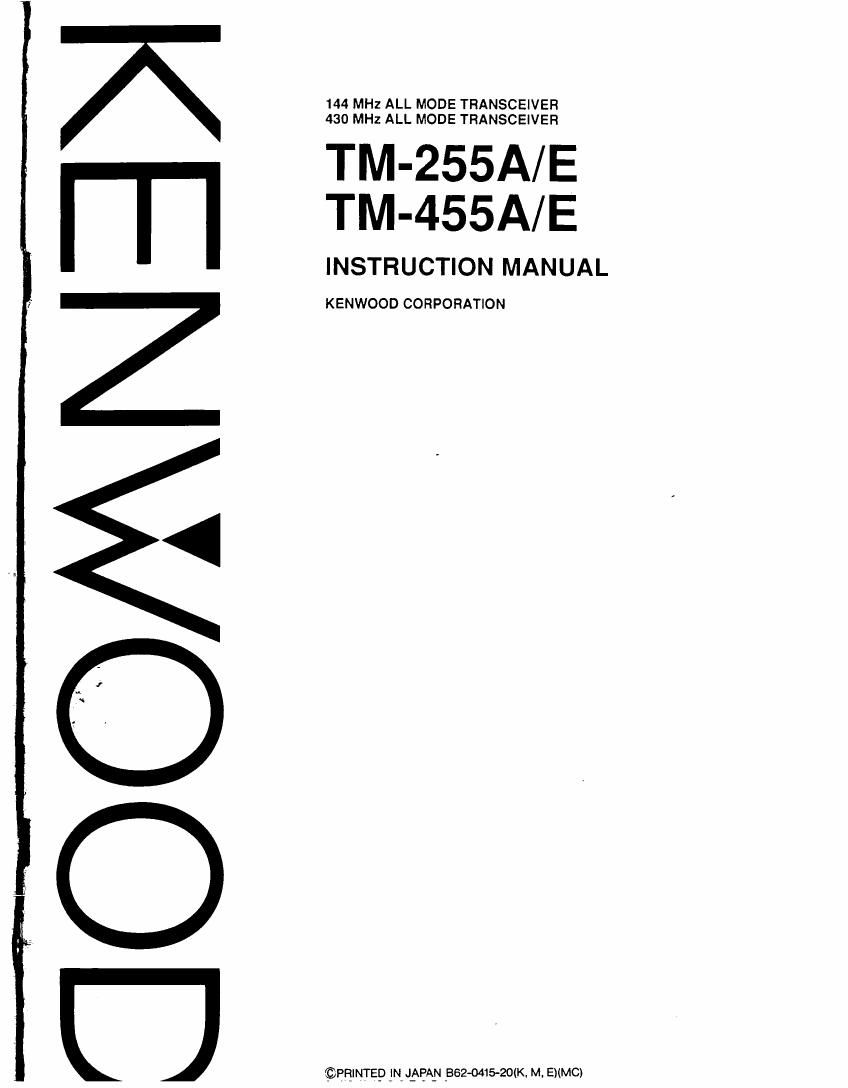Kenwood TM 455 E Owners Manual
This is the 65 pages manual for Kenwood TM 455 E Owners Manual.
Read or download the pdf for free. If you want to contribute, please upload pdfs to audioservicemanuals.wetransfer.com.
Page: 1 / 65
